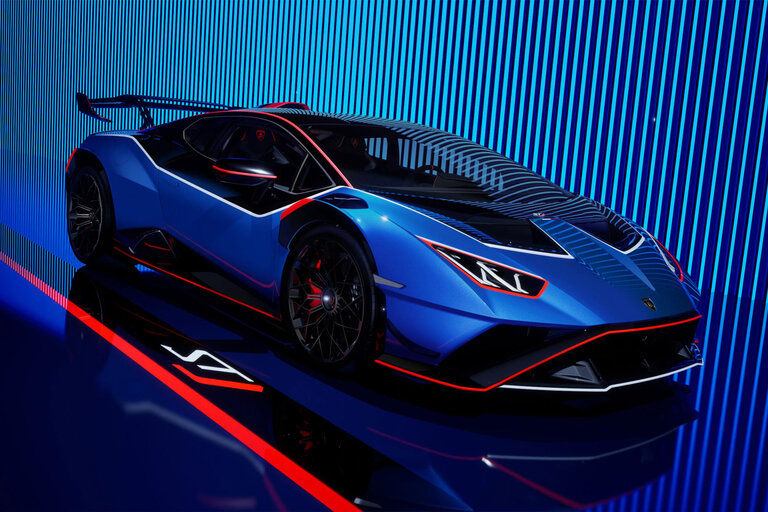
To engage Mercedes-Benz Drive Pilot, we needed to find traffic. In L.A., that’s not very hard. Our driver, Jochen Haab, manager of validation and testing, advance driver assist systems at Mercedes-Benz, entered Interstate 10 from Crenshaw Boulevard and headed toward Santa Monica to find the slow highway speeds required to activate the Level 3 autonomous-driving system.
Although it only works at speeds up to 40 mph, the system operated smoothly. However, unlike some Level 2 systems, Drive Pilot can’t perform automated lane changes in the U.S. That feature is part of Benz’s Intelligent Drive Level 2 driver-assist system that’s available across the lineup, and we expect it to be added to Drive Pilot in the future. Drive Pilot is currently only available on the new S-class and the EQS electric sedan, and it’ll be expanded to other vehicles in Mercedes’s lineup later.
The Society of Automotive Engineers (SAE) describes driver-assist systems in levels of automation ranging from Level 1 through Level 5. Adaptive cruise control, lane-keep assist, and automatic lane-change features included in systems such as Intelligent Drive, Tesla’s Autopilot, and General Motors’ Super Cruise all fall under SAE’s Level 2. Most of these systems are meant to reduce stress on drivers during long hauls (no matter how they’re advertised) but always require the driver to remain attentive and take over whenever necessary.
Drive Pilot, much like Super Cruise and Ford’s BlueCruise, is limited to pre-mapped divided highways. Right now, the tech is only available in Germany, where it’s certified on just over 8000 miles of roads. But unlike the two Level 2 systems from the American automakers—which may be hands-free but which still require the driver to pay attention—Drive Pilot, remember, is considered a Level 3 system, which means when it’s in operation the driver is not responsible for driving. It’s also similar to BMW’s Driving Assistant Professional feature, which also operates in stop-and-go traffic up to 37 mph on limited-access highways, but the BMW system requires the driver to always pay attention and is thus a Level 2 system.
On the other hand, Mercedes says that drivers using Drive Pilot can reply to emails, watch YouTube videos (we know of a pretty good channel), or even play Tetris on the car’s touchscreen while stuck in traffic. An infrared camera behind the steering wheel (some Level 2 systems use this, too) makes sure the driver’s eyes are still in the approved scope—and that the driver hasn’t fallen asleep. If Haab looked over at us for too long, the system warned him to look back into the field of view. After a series of warnings, the car starts to perform emergency braking. And if the flow of traffic causes the car to exceed 40 mph, the system requires the driver to take back control.
Drive Pilot uses the same sensors used for adaptive cruise and other driver-assist features and adds lidar. A camera in the rear window and a microphone can detect approaching emergency vehicles and shut off the system. Sensors in the wheel wells detect if the road is too wet for the system to operate. And cars equipped with Drive Pilot have backup braking, steering, and electrical systems.
Mercedes also showed us its Intelligent Park Pilot automated valet parking system. Unlike other remote-parking features, which use the car’s onboard cameras and sensors, Mercedes’s system, co-developed with Bosch, relies on cameras and sensors installed in ceilings of parking garages. In our demonstration at the InterContinental Los Angeles Downtown Hotel, though, Bosch installed temporary sensors on the ground level, which helped an EQS electric sedan creep slowly to its designated parking spot. Mercedes has the system up and running at the Stuttgart Airport in Germany but is awaiting approval to install the infrastructure in the U.S., much like Drive Pilot.
While Drive Pilot has the added benefit of not requiring the driver to watch the road like other hands-free systems, its speed and location limitations make it feel behind some Level 2 systems available in the U.S. today. Mercedes says it’s working on getting approval in California and Nevada by the end of the year, and Drive Pilot should arrive on S-class and EQS models in the U.S. by early 2023. We expect the option will cost around $5000 when it arrives, and Mercedes says that it will likely be available through an over-the-air update.
This content is created and maintained by a third party, and imported onto this page to help users provide their email addresses. You may be able to find more information about this and similar content at piano.io
#MercedesBenz #SClass #Ridealong #Drive #Pilot #Takes
Source link





